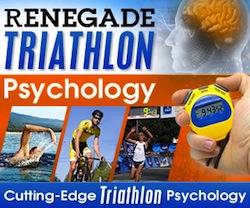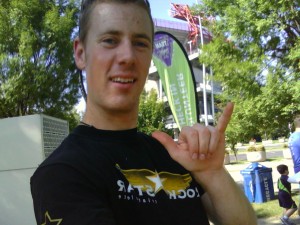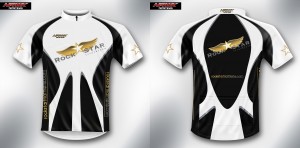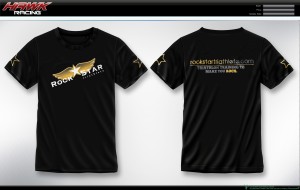In this video, Ben Greenfield uses the official Rock Star Triathlete Academy whiteboard to walk you through how to use periodization to optimally prepare for your next triathlon.
Author Archives: admin
Coming January 2012 – Ben Greenfield’s Tri-Ripped Triathlon Training Plan
Now Available! “Top 20 Fueling Myths Exposed” by Ben Greenfield
I wrote “Top 20 Fueling Myths Exposed” for the recreational exerciser to the elite athlete, and it contains a collection of the most common sports nutrition and exercise fueling myths, why they’re wrong, and what you can do about it to maximize your health and performance.
When you read this book, you’ll change the way you think about fueling your body, and you’ll learn the shocking truth about popularly held sports nutritions beliefs, including:
-How everything you know about pre-workout nutrition is probably not true…
-Why you don’t need to eat within 20-60 minutes afer a workout like everybody tells you…
-How the “Glycemic Index” is a fairly useless tool for measuring carbohydrate values….
-Why whole wheat is not as healthy as you may think…
-How not drinking enough water can still lead to water intoxication.
-Why health foods and energy bars are actually making you slower…
-Why “eating too much” is rarely the cause of gas and bloating during your workout…
-And much more!
I was assigned to write this book as the resident sports nutrition expert for Endurance Planet, I am very proud of what I’ve been able to create within the pages, and I guarantee it will re-invent the way you think about fueling your body!
Click here to get the instant digital download of Ben Greenfield’s Guide To Sports Nutrition: “Top 20 Fueling Myths Exposed” – for just $7.
How To Lift Weights For Triathlon
In this video, Ben Greenfield shows you how to lift weights for triathlon using some of the basic strength and power moves he used in his Ironman Hawaii preparation.
What To Eat During Your Triathlon
In this video, Ben Greenfield explains to you what to eat during your triathlon, and helps you navigate the confusing array of energy powders, gels and bars.
How Ben Greenfield Sets Up His Bike in Transition
In this video, Rock Star Triathlete Academy coach Ben Greenfield shows you exactly how he sets up his bike in transition – showing you what he puts on, and his secret tip for carrying your nutrition more aerodynamically.
The Only 3 Workouts You Need To Do During Your Triathlon Race Week
This Wednesday night, at 6PST/9EST, Ben & Kerry will be teaching you exactly what to do in the week before your race, in a live Q&A. In the meantime, in this video, Ben Greenfield gives you the top 3 swim, bike and run workouts that you should be doing during triathlon race week, and also shows you his personal ice bath/watering hole.
Ironman 70.3 World Championships in Vegas – Course Preview With Race Director Frank Lowery
In this audio quick tip from the Rock Star Triathlete Academy, Ben Greenfield interviews Frank Lowery, race director of Ironman 70.3 World Championships in Vegas. During the discussion, Frank gives you everything you need to know about the weather, the swim, bike and run in the brand new venue.
[powerpress]
Rock Star Triathlete Academy Member Patrick Wins A Free Month of Membership!
Here’s Rock Star Triathlete Academy member Patrick at the Nashville Music City Triathlon.
A few months ago, in this post you can read by clicking here, we told you that we’re now giving a free month of membership to any Rock Star Triathlete Academy members who send us a picture or video in the Rock Star Cycling or Triathlon Kit or Rock Star Jet Black Tech T-Shirt.
Here’s the deal:
-You must be at a triathlon or triathlon event.
-We’ll triple your free month of membership if you’re on the race podium and we verify the results.
Congratulations to Pat (pictured above), who just sent this photo and and got a free month of membership to the Academy (and by the way, if we get more photos from Pat or anyone else at more events, we’ll continually to add more free months).
Here’s a little incentive to get you started. At https://rockstartriathlete.com/rock-star-triathlete-threads/ (or below) you can use code ROCKFIVE for a $5 discount on the t-shirts and code ROCK20 for a $20 discount on the cycling kits! You can even combine the codes, so enjoy.
Rock on, and here’s more clothing info below…
Here at the Rock Star Triathlete Academy store, you can get cool threads, shirts, hats and Rock Star Triathlete Academy gear to show off your style at the races! This gear is available to members only. NEW: Rock Star Cycling Kits and Tech-Tees are now available!
Rock Star Cycling Jersey (includes shorts emblazoned with logo) – $100.00 & FREE Shipping. Click here to order.
Rock Star Jet Black Shirt – $20.00 & FREE Shipping. Click here to order.
[zstore]
Training Your Brain for Triathlon Success
 This is a guest post from Renegade Triathlon Psychology coach Stephen Ladd (pictured right), who has taken a somewhat unorthodox path to becoming one of most sought after gurus in the world when it comes to training your brain for peak performance. His formal education in the States included undergraduate studies in psychology, religion, and philosophy, and Graduate studies in Comparative Religions. He then ventured outside of the US to experience the cultures and mind practices of Southeast Asia and Japan. In addition to this guest post and article below, Stephen will be featured on next week’s BenGreenfieldFitness.com podcast episode.
This is a guest post from Renegade Triathlon Psychology coach Stephen Ladd (pictured right), who has taken a somewhat unorthodox path to becoming one of most sought after gurus in the world when it comes to training your brain for peak performance. His formal education in the States included undergraduate studies in psychology, religion, and philosophy, and Graduate studies in Comparative Religions. He then ventured outside of the US to experience the cultures and mind practices of Southeast Asia and Japan. In addition to this guest post and article below, Stephen will be featured on next week’s BenGreenfieldFitness.com podcast episode.
I consider a triathlon (of any distance) to be the “toughest sport on earth”. The amount of time and effort required to train for three separate sports is unparalleled in the world of athletics.
But what is often overlooked are the extreme mental and emotional demands of triathlon training and racing.
For a triathlete to consistently perform at peak performance levels, they must have the ability to control their mental and emotional states, especially prior to and during the actual race. Imagine being able to instantly evoke a supreme state of “confidence” in yourself instead of having pre-race anxiety, or evoke a state of “determination and focus” when you start to feel fatigued and have another six miles to the finish.
It is important to understand the difference between what is labeled these days as “Positive Thinking” and what I am talking about when I refer to controlling your mental and emotional states. The “Positive Thinking” protocol (at least how it’s commonly taught) is to simply ignore how you feel (anxiety) and tell yourself, over and over again, that you feel confident, or happy, or focused or whatever it is you’re desperately trying to convince yourself that you are.
On the other hand, accurately and properly controlling your mental and emotional state is a way for you to literally change your subconcious mind, so that you’ll actually be confident, instead of just telling yourself that you are confident. See the difference? When you do what I am about to teach you properly, there will be no need for you to try to convince yourself that you are confident – instead, you will actually be in a supreme state of confidence and able to perform closer to your peak potential.
One valuable tool for achieving this true change in your mental and emotional state is called “Anchoring”, which comes from the world of Neuro-Linguistic Programing (NLP).
What is an “Anchor”?
An Anchor is formed when your internal response becomes associated with an external stimulus. For example, think about Pavlov and his salivating dogs:
Hear A Bell = Salivate
We can use a similar process for Anchoring any positive mental state to a specific action. You will simply replace the “bell” with an action – such as touching a specific knuckle on your hand, and replace “salivating” with something more useful for your triathlon training and racing – such as “confidence” (although it could also be “relaxation”, “speed”, “aggressiveness” or whatever else you want your mental state to be).
Now, let’s go through a concrete example of how to use Anchoring to achieve a state of confidence.
Step 1) Recall a time in your life when you felt the most confident. This doesn’t have to be during a triathlon. It can be any moment – any moment of exceptional performance or confidence in your life, no matter how long ago it may have been.
Step 2) Next, you need to “ramp up” the positive emotion. In order to do this, you must completely place yourself into your remembered scene. As a matter of fact, I want you to get up and move the way you would be moving in this situation. You may want to be in a quiet place where you can focus. Feel what you would be feeling (confidence). Hear what you would be hearing, and see what you would be seeing. Take this emotion of confidence and intensify it by a factor of ten. Sense it as energy surging through your body. Imagine the crowds of spectators cheering you on (even if they weren’t in your original scene). Then imagine it as another bolt of confidence that shoots through your body and intensifies your feelings of confidence by another factor of ten.
Step 3) When you sense you are at your peak intensity of confidence emotions, “SET” your physical anchor to this state (I’m about to explain to you how to do that).
Step 4) How to choose and set your anchor: you can use almost anything for your anchor, as long as it is not a common action that you do in everyday life. For example, you could “set” an anchor as tapping your right shoulder with your left hand. Knuckles are my favorite anchors, for reasons I will reveal shortly. I suggest using the knuckles of your non-dominate hand. For example, if you are right-handed, take you right index finger and push down on the knuckle of your left index finger (remember that you are doing this while you are still in your state of peak confidence, and visualizing/re-enacting that scene). In this case, that movement of right finger on knuckle of left finger would be your anchor for supreme confidence.
Step 5) Now come out of your emotional state brief period of time. Count backwards from twenty to zero. This will “break” your emotional state. Once broken, stay away from that state for one to two minutes.
Step 6) Next, repeat steps 1-5 at least two times, and if you want to completely perfect the Anchor, up to ten more times, each time with as much enthusiasm and excitement as the first time.
Step 7) Finally, test the strength of your anchor. After that last time, break your emotional state by counting backwards from twenty to zero. Wait just a few moments, then “fire-off” your anchor (in this case pushing down on the knuckle of your left index finger). You should get the surge of confidence that you have anchored to that action.
If you get a strong feeling of confidence, then you have successfully set a solid anchor.
If you didn’t quite get that same feeling of confidence, then you need to keep working on the intensity of your emotion while setting the anchor, and perhaps just a bit more repetition. This takes practice, and often is not perfect the first time you try!

Don’t be discouraged if it takes you some time to set a really strong anchor. It can take devoted practice, but it’s worth it, because once you are in control of your mental states, your triathlon potential will be able to reveal itself, and you’ll be able to set as many anchors as you want for as many mental and emotional states as you need to call upon during your event.
This is just one method that you can use to train your brain for triathlon success. The methods that I teach in my Renegade Triathlon Psychology program go way above and beyond Anchoring. This program is the only product of its kind on the market today, utilizing the best alternative sports psychology technologies to empower you to take control of your mental training and perform consistently at the peak of your genetics and skill levels.
I look forward to helping you learn how to change your mental and emotional state. Click here to read more and to watch to an important video from me.





